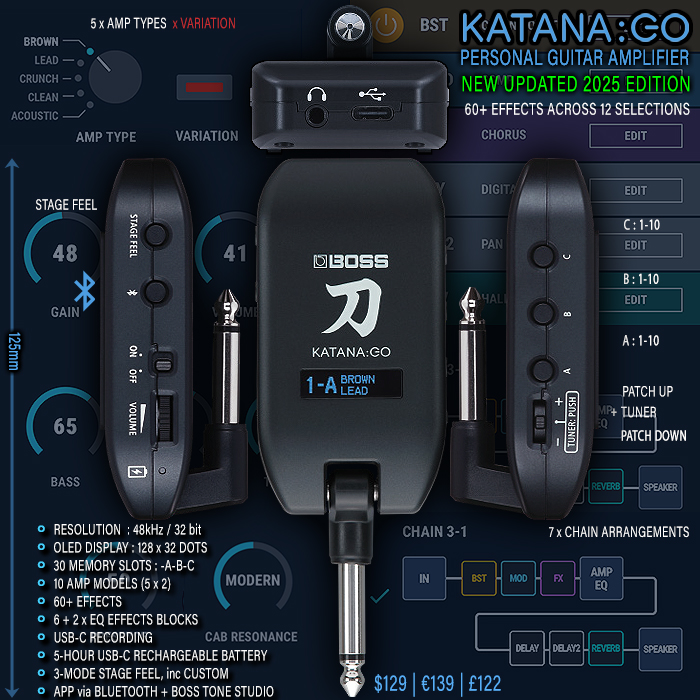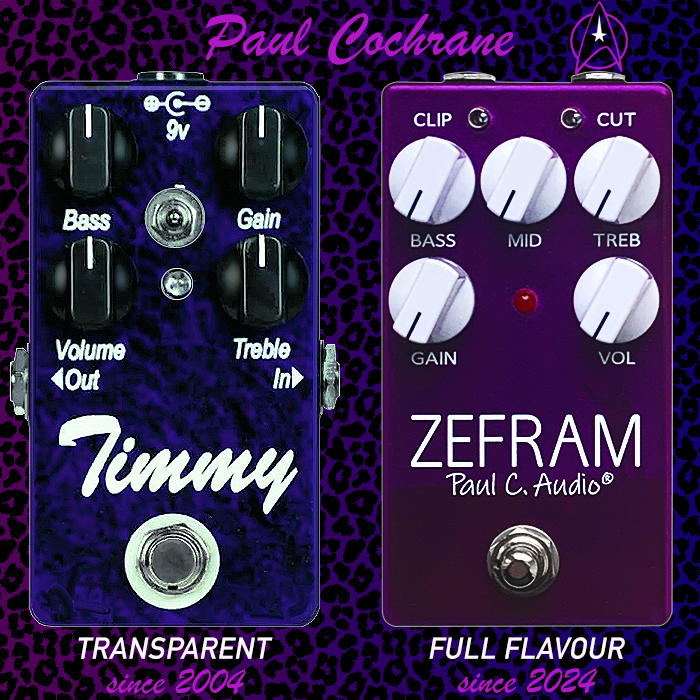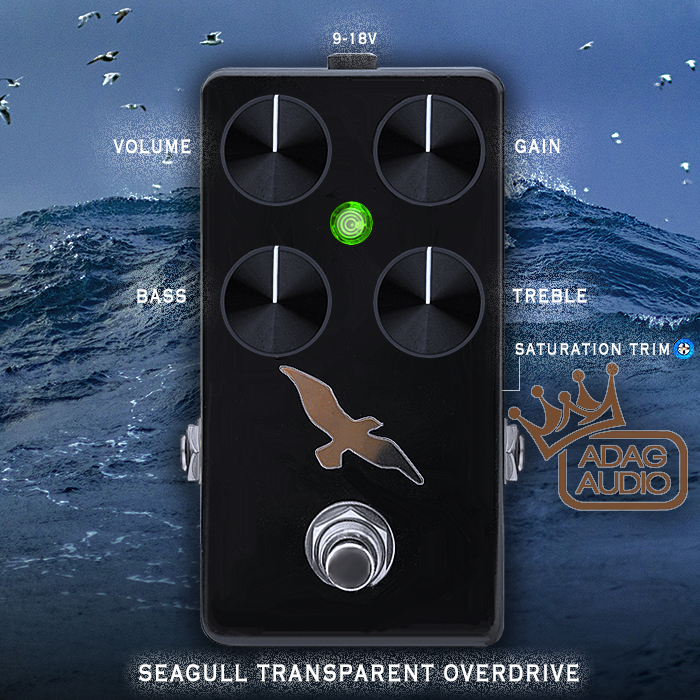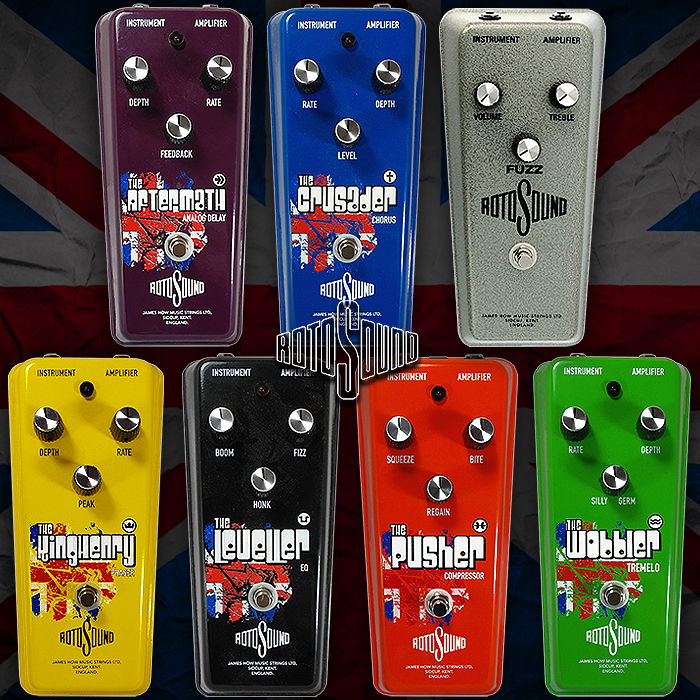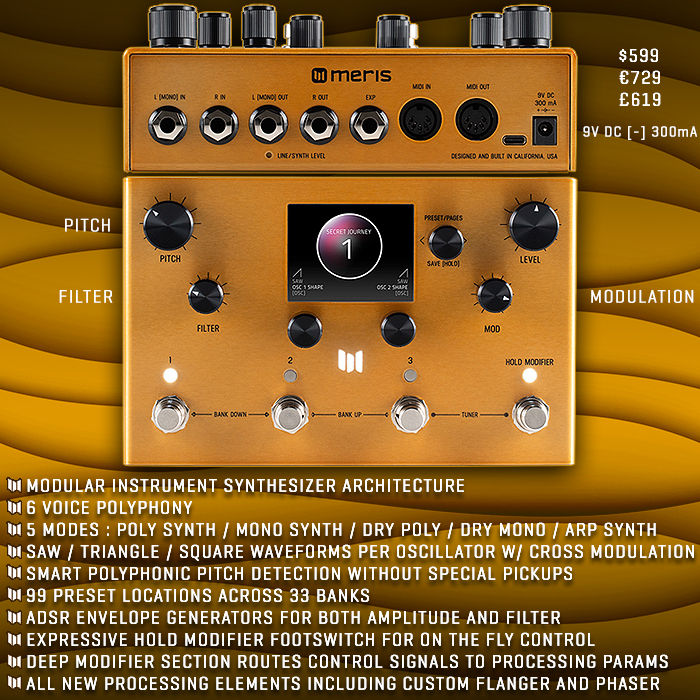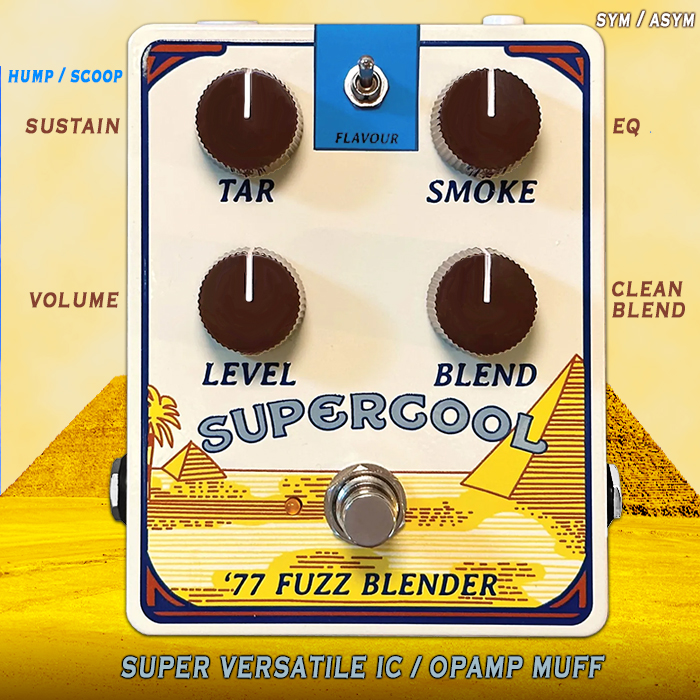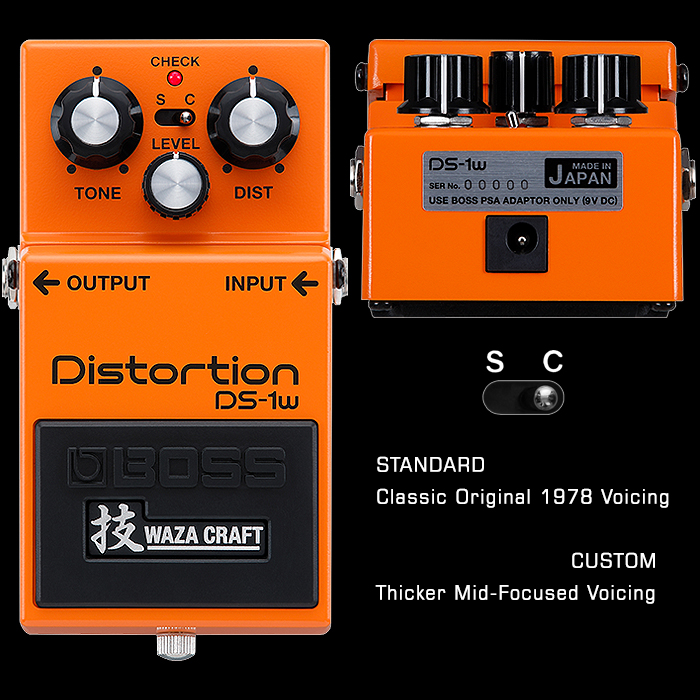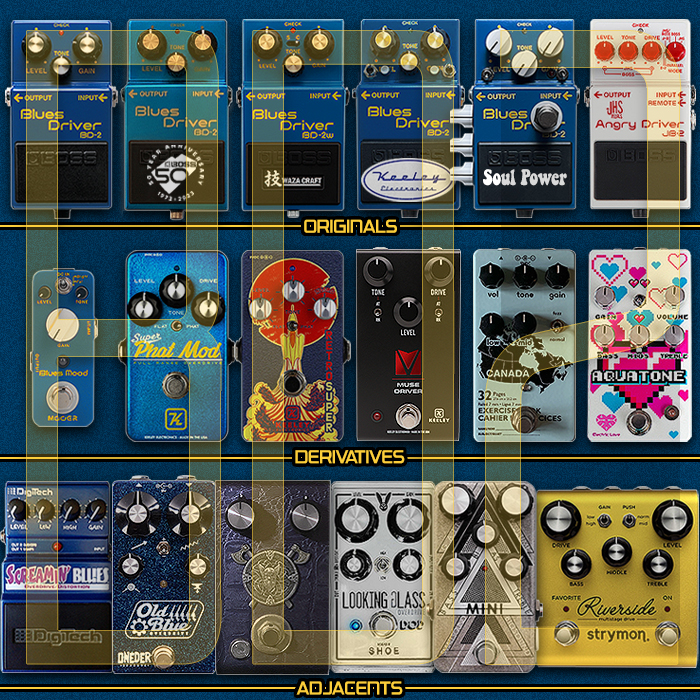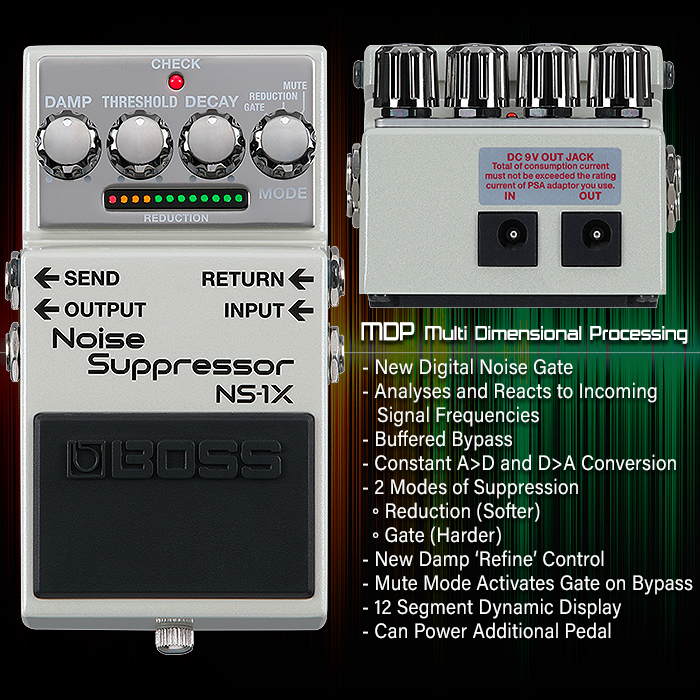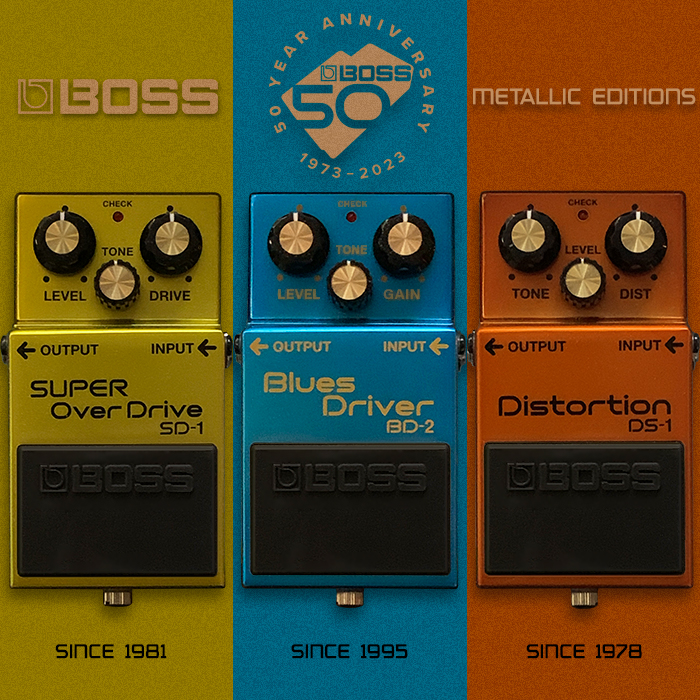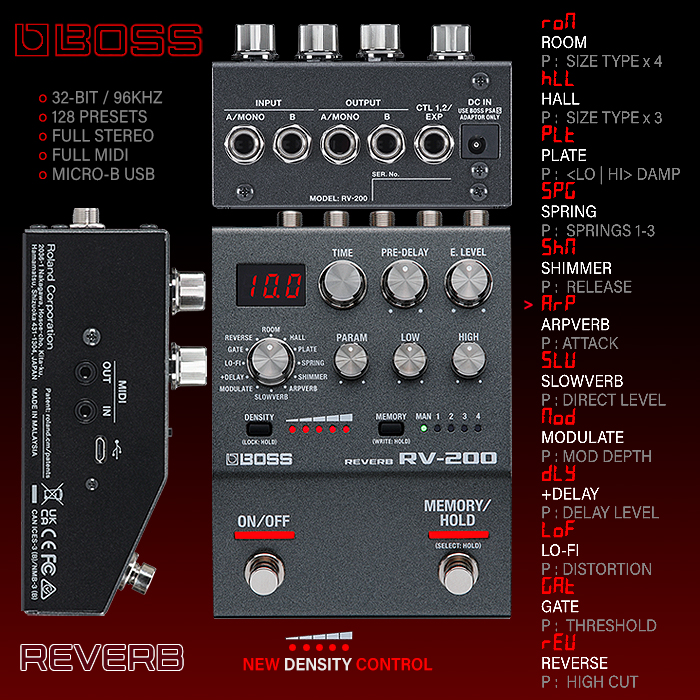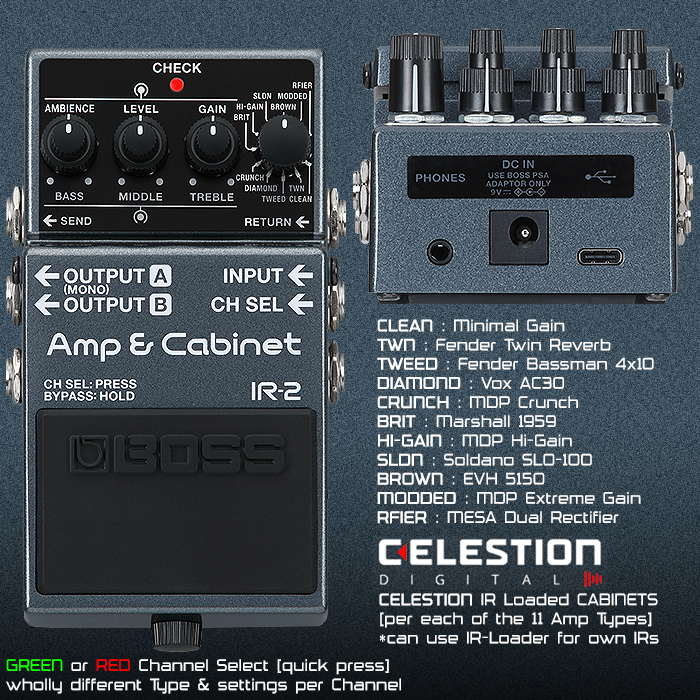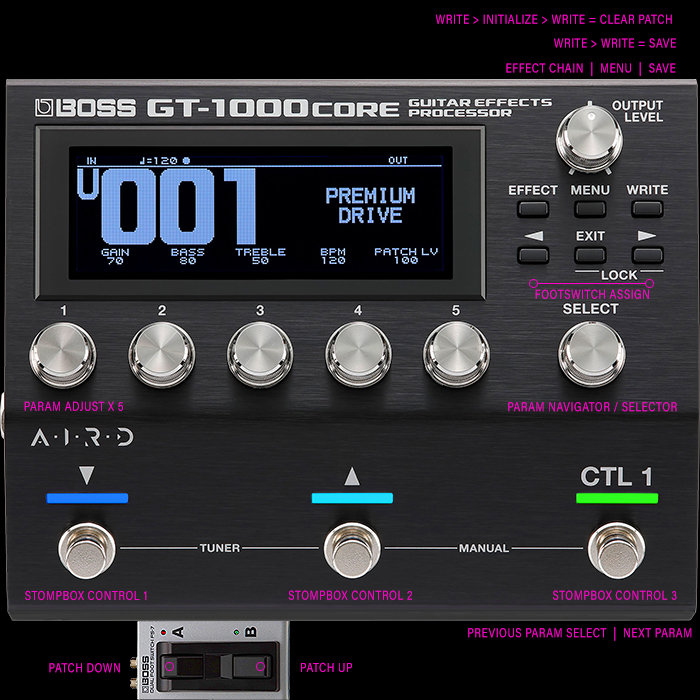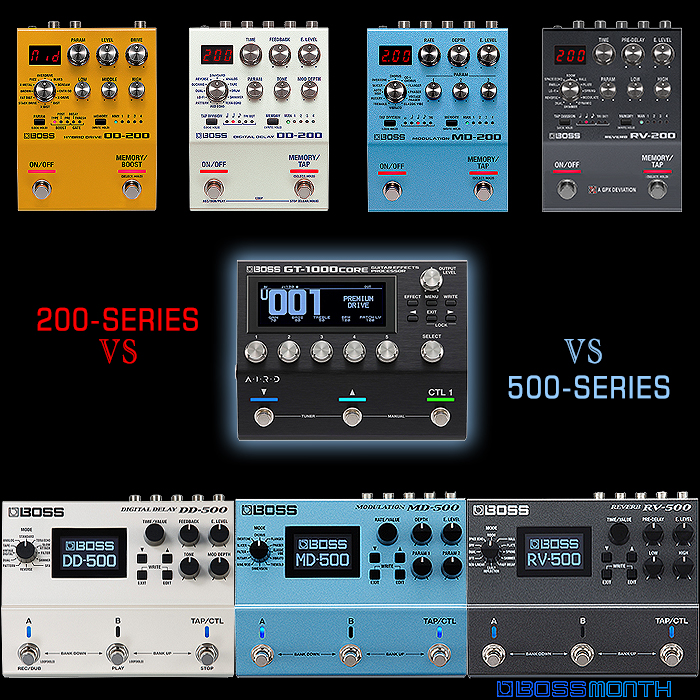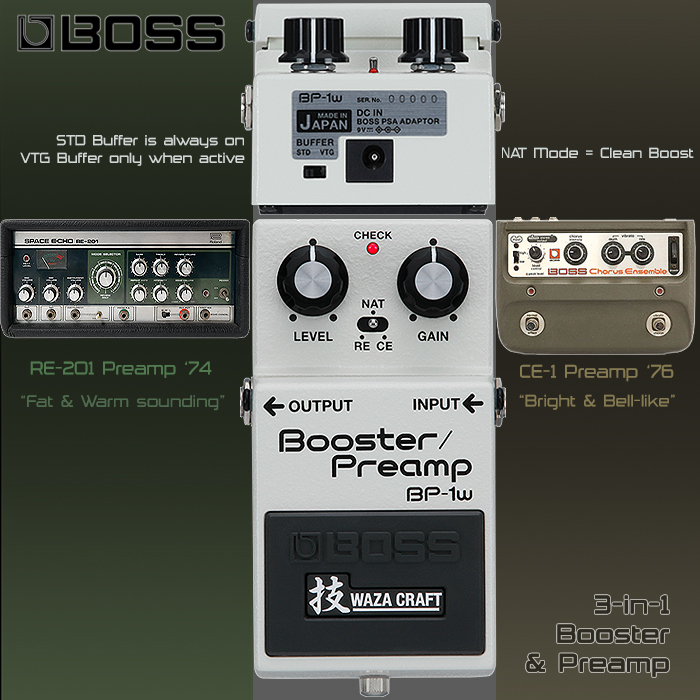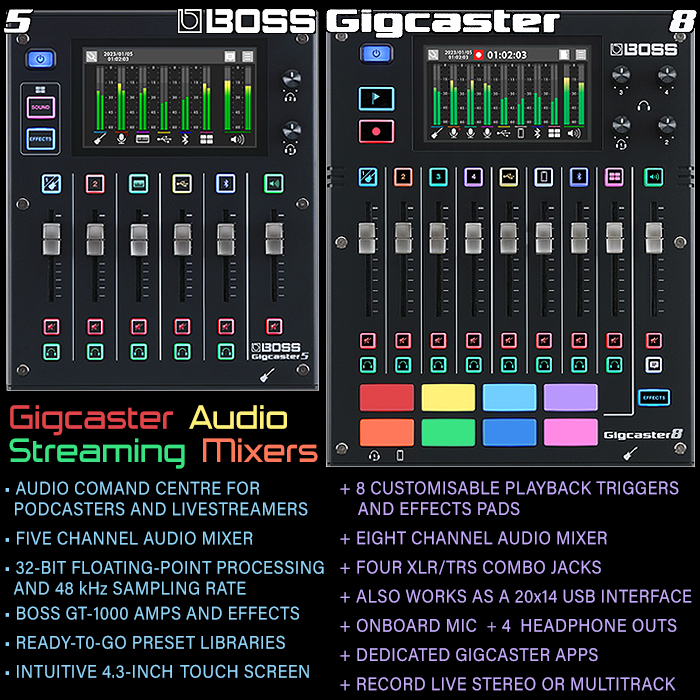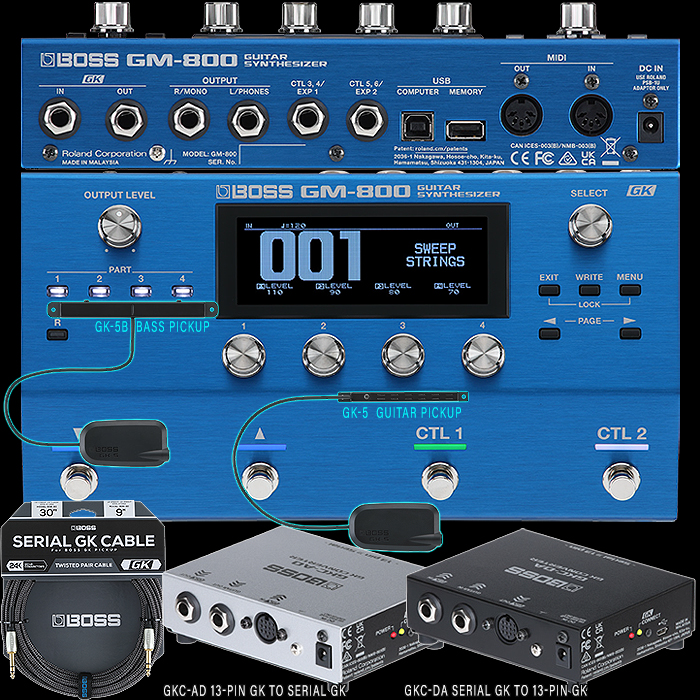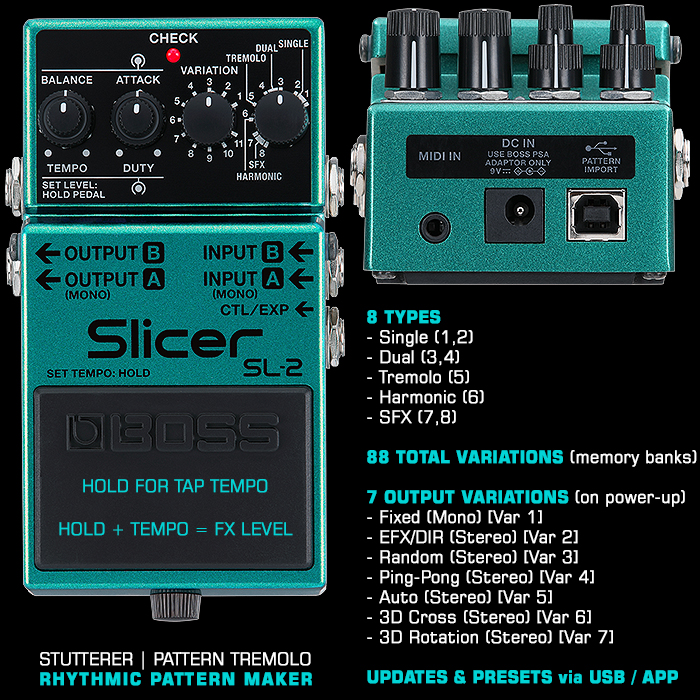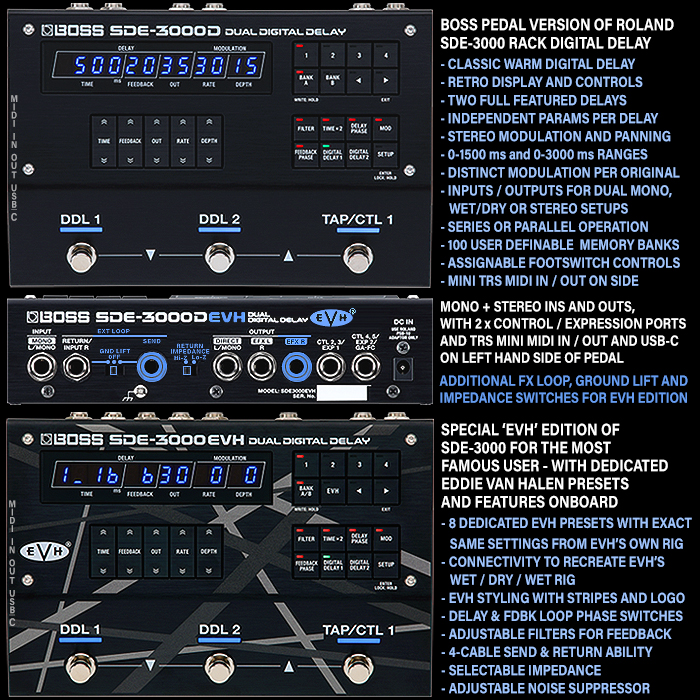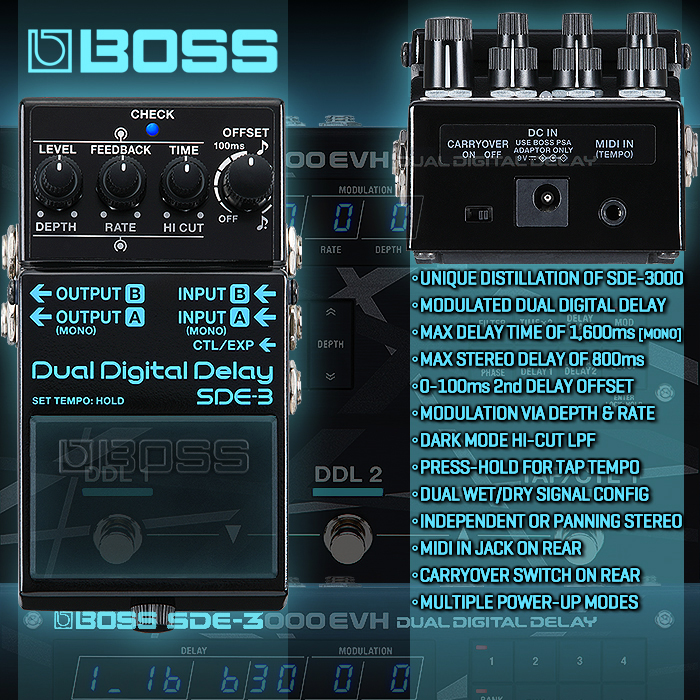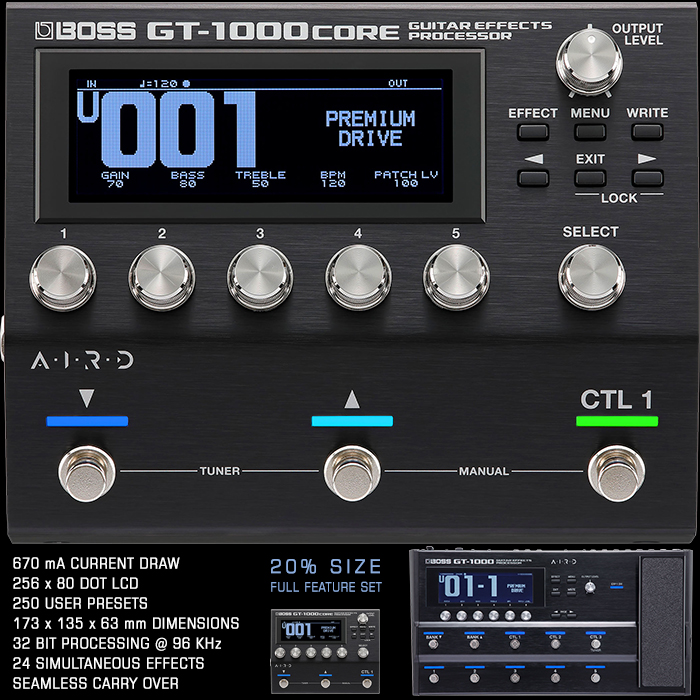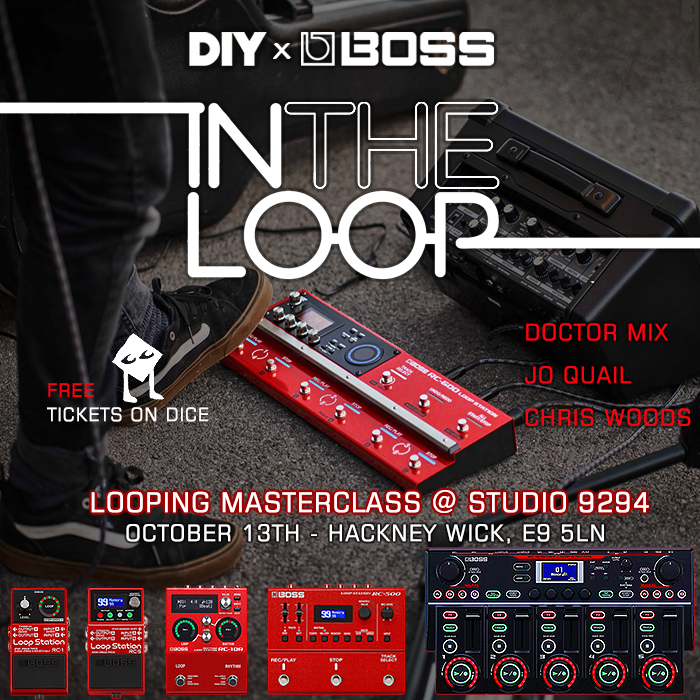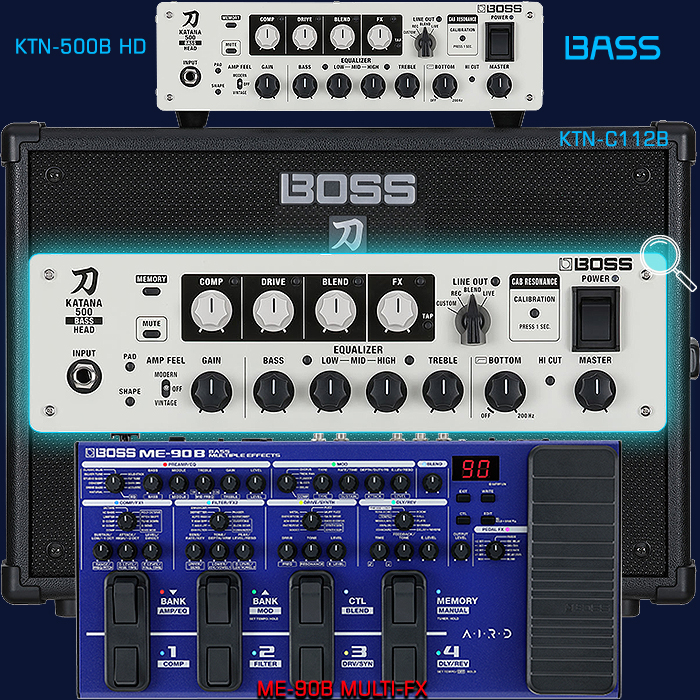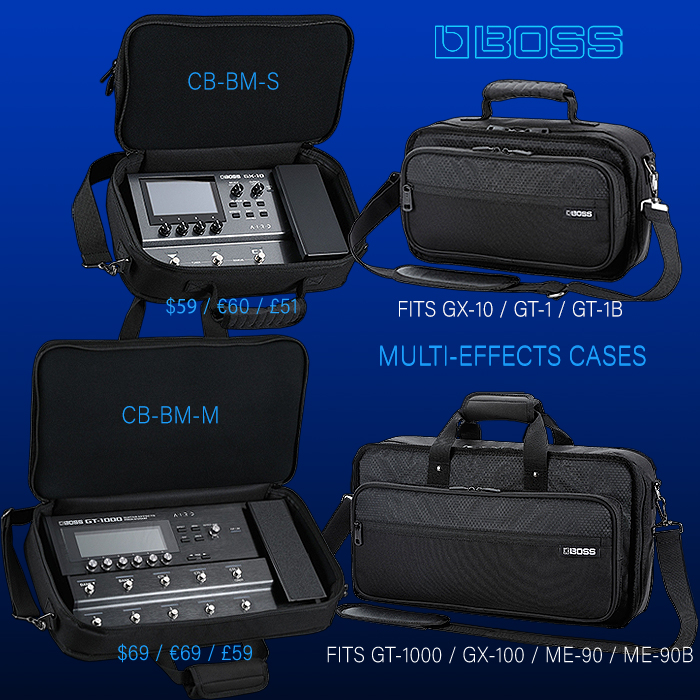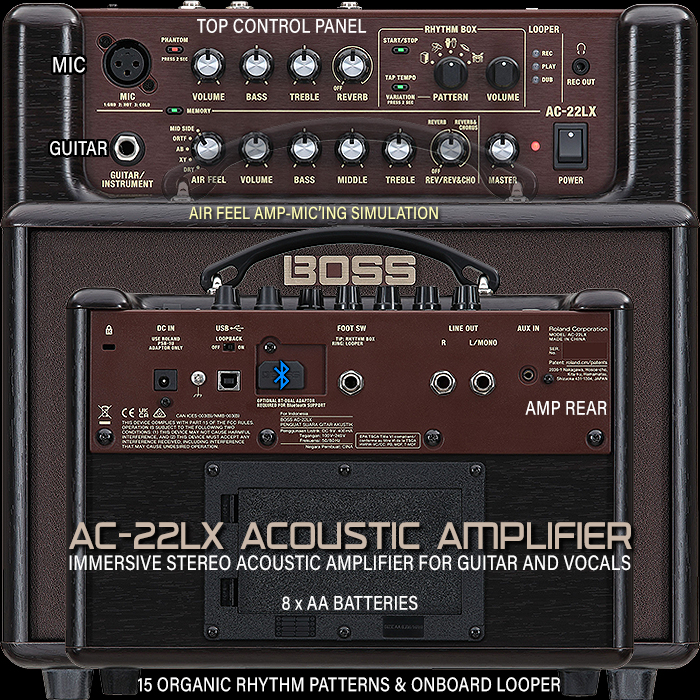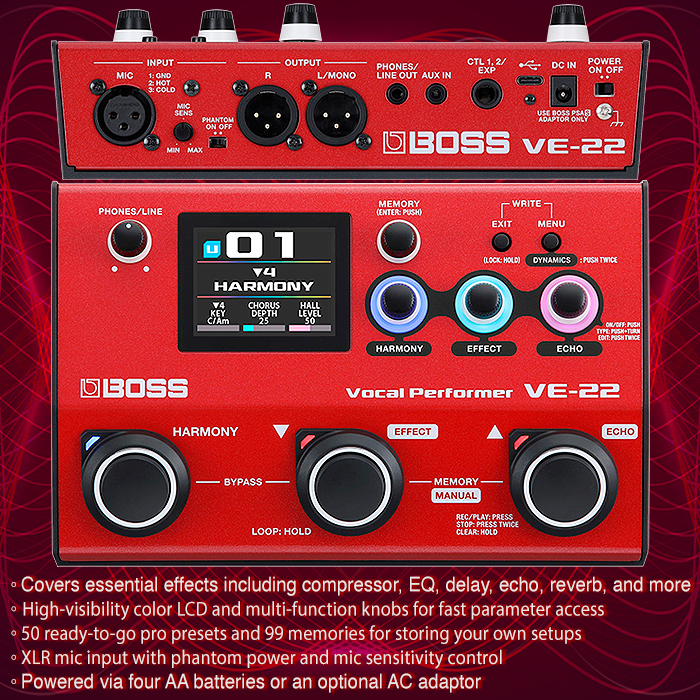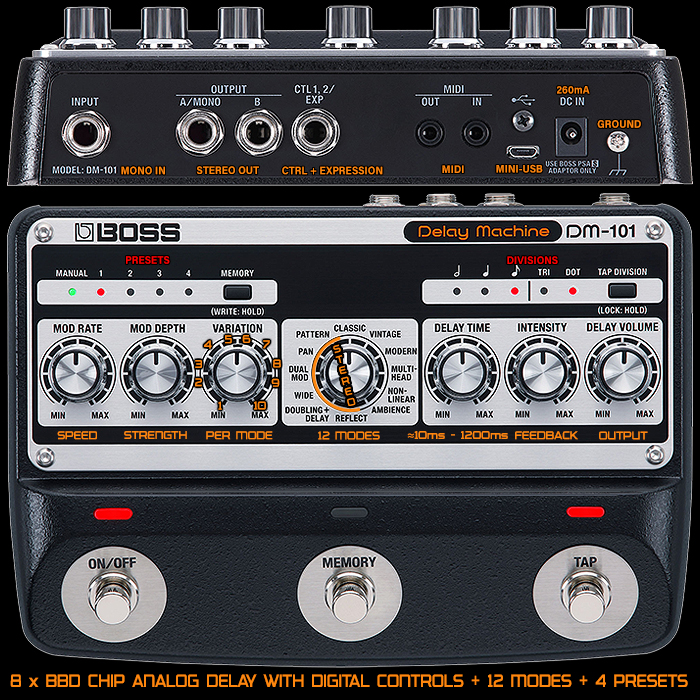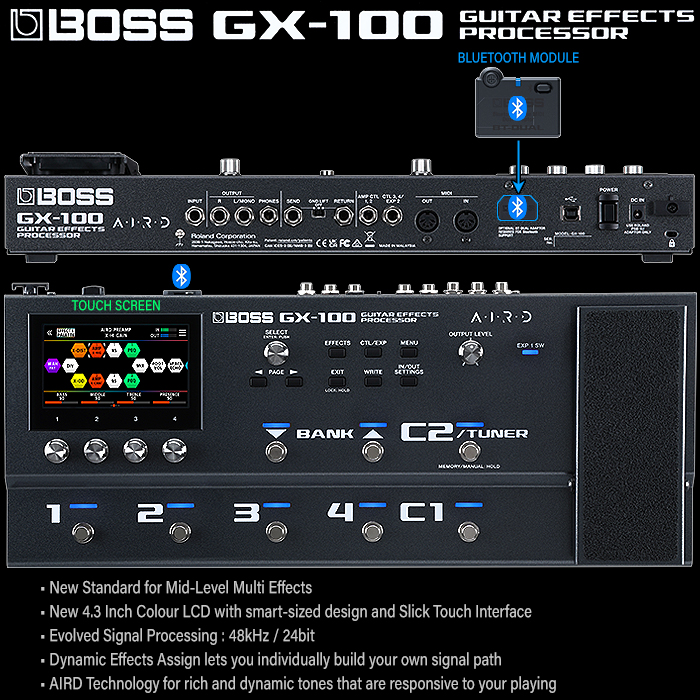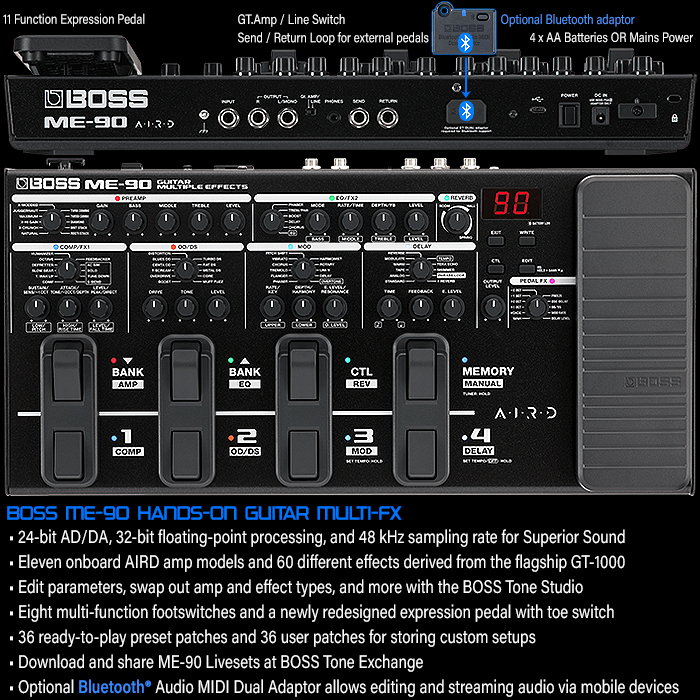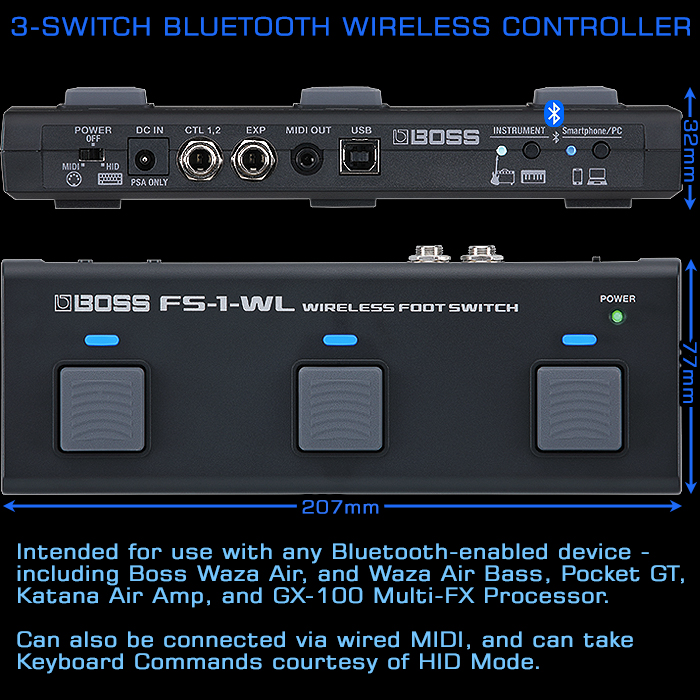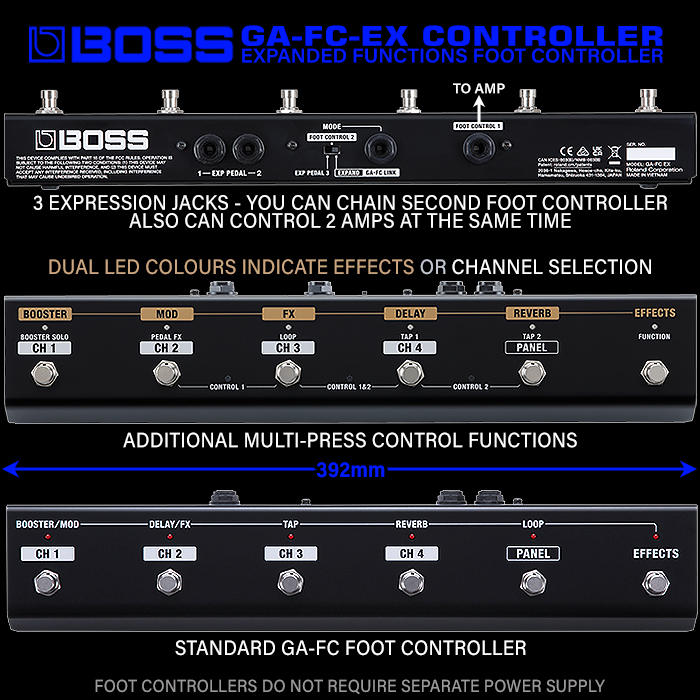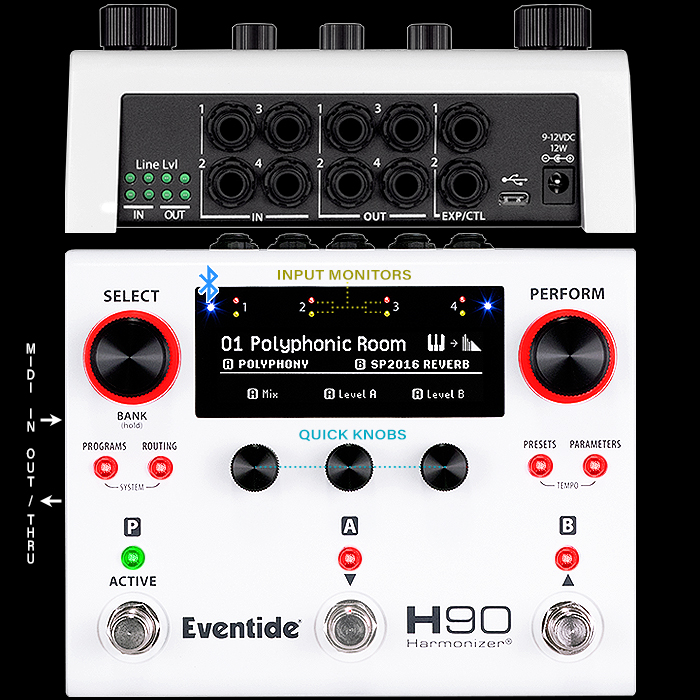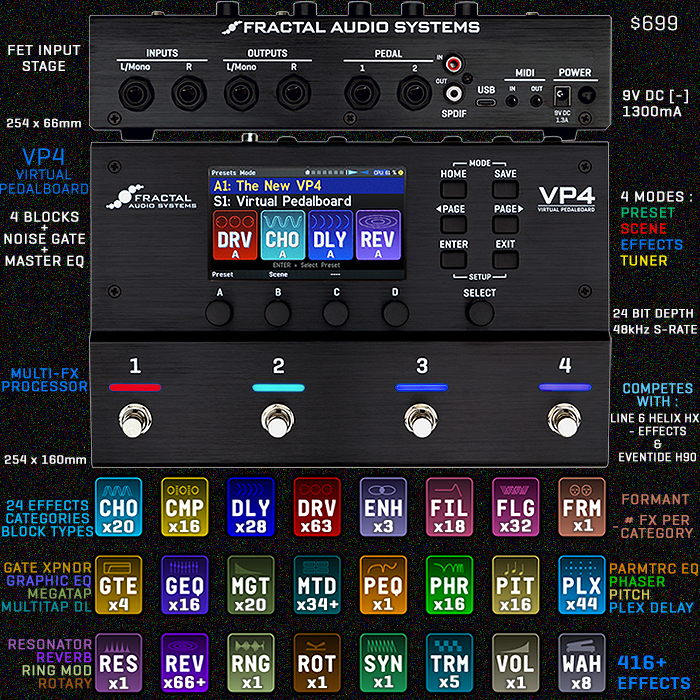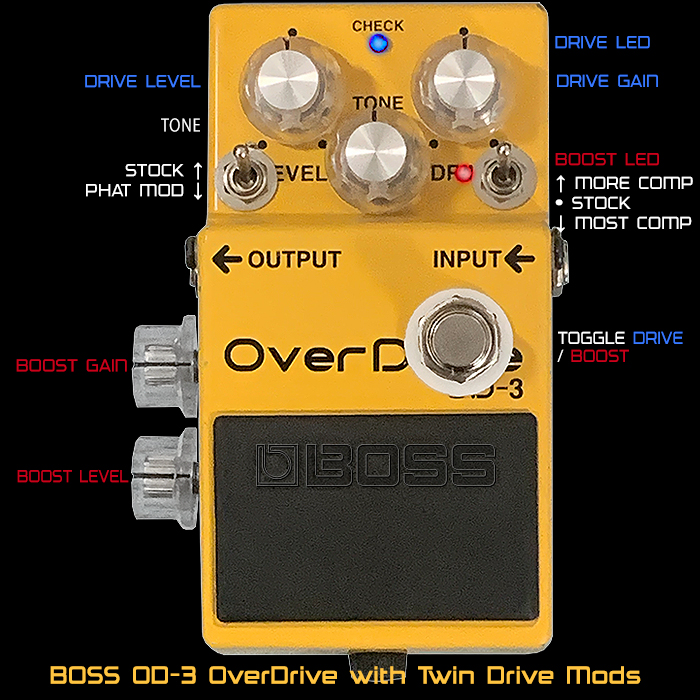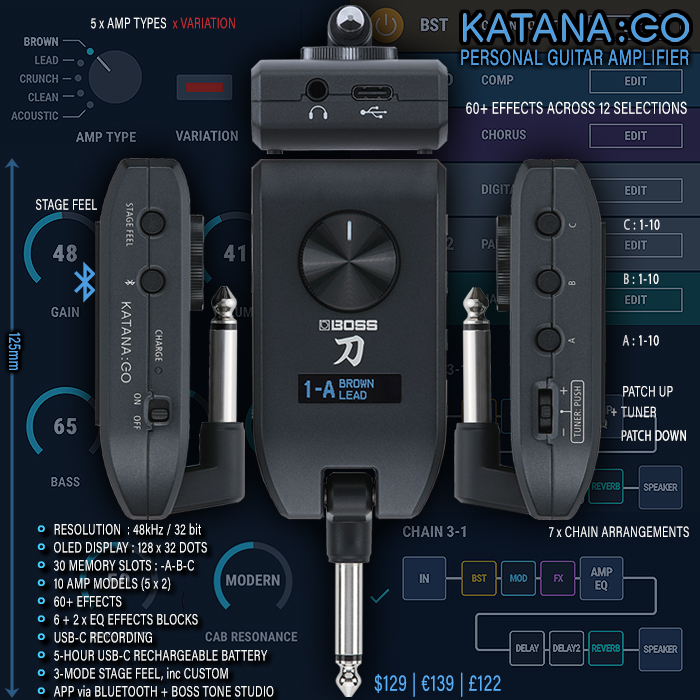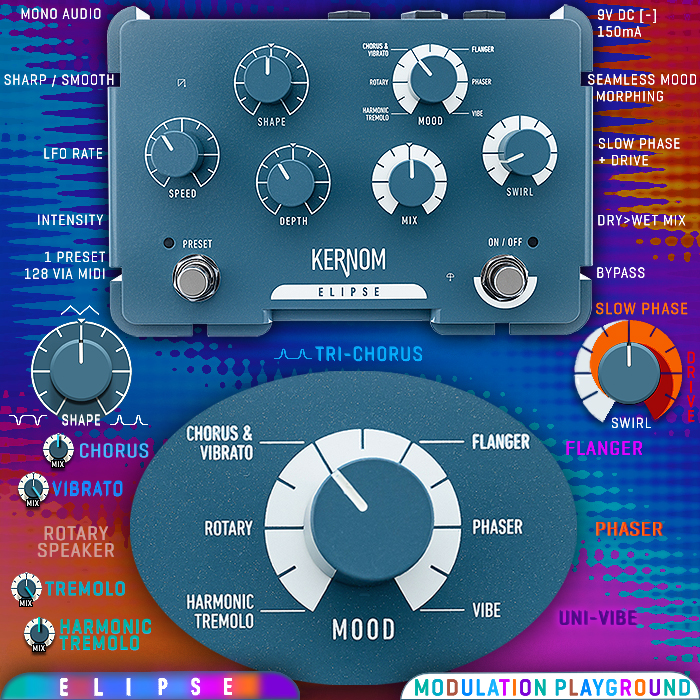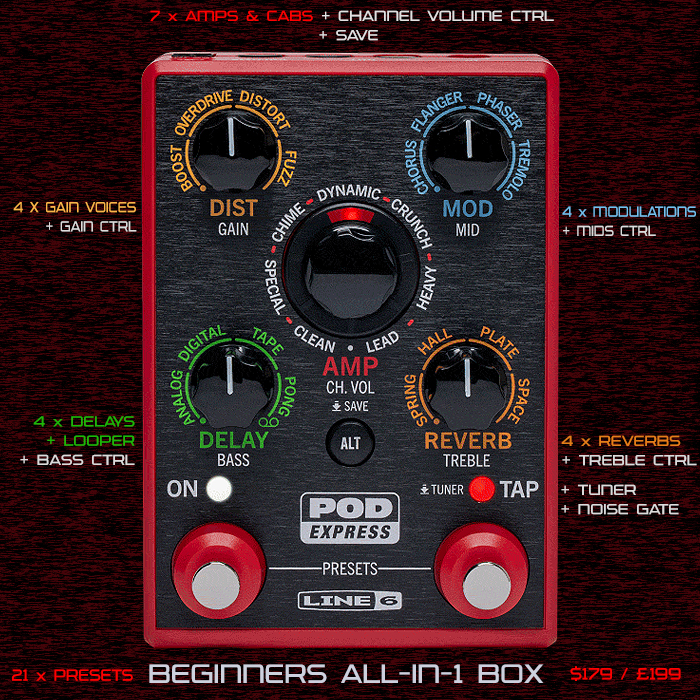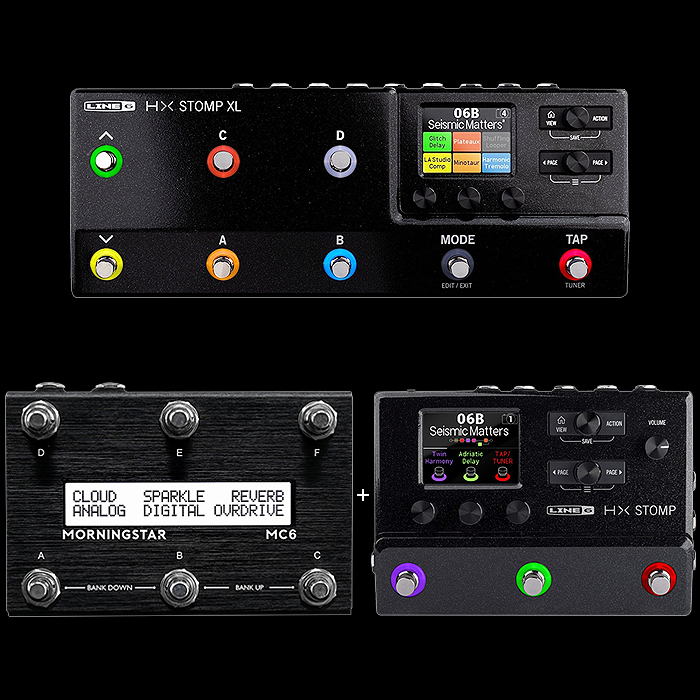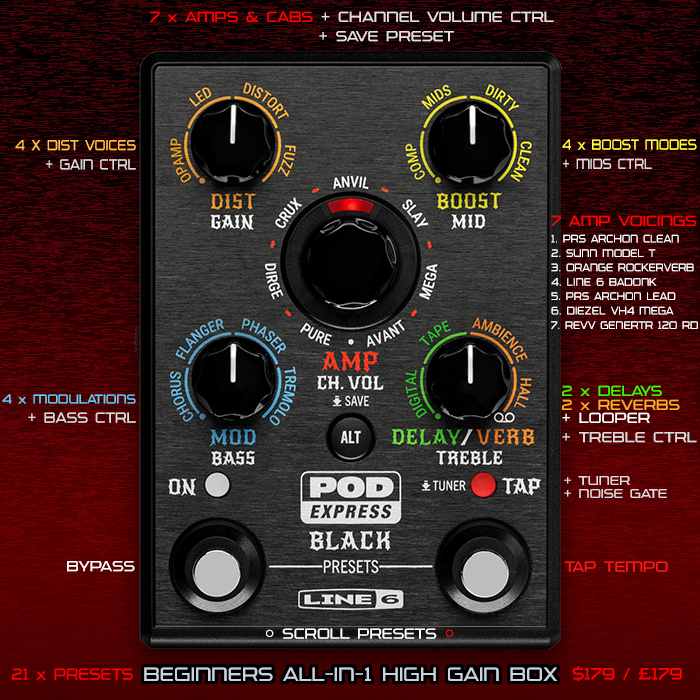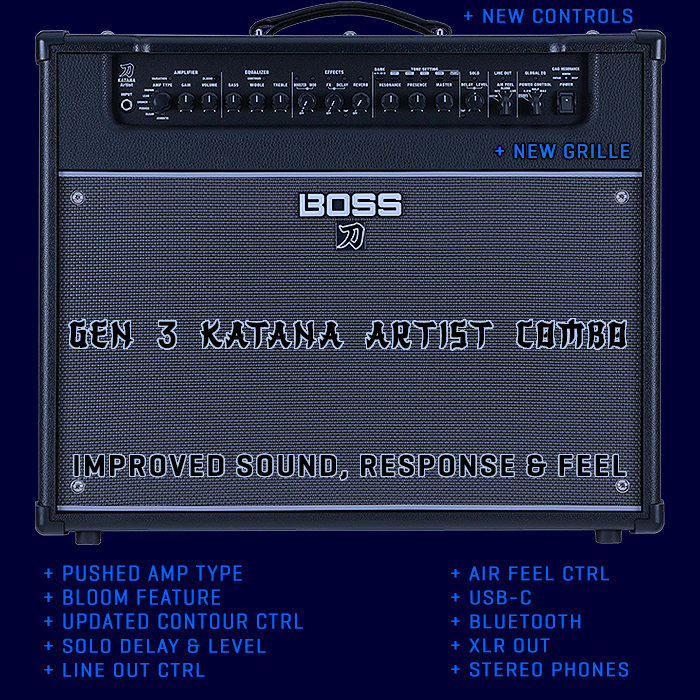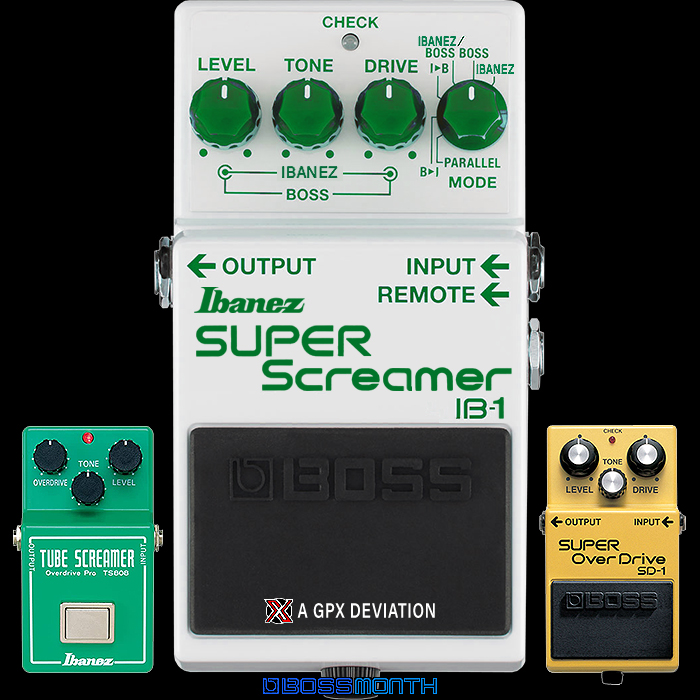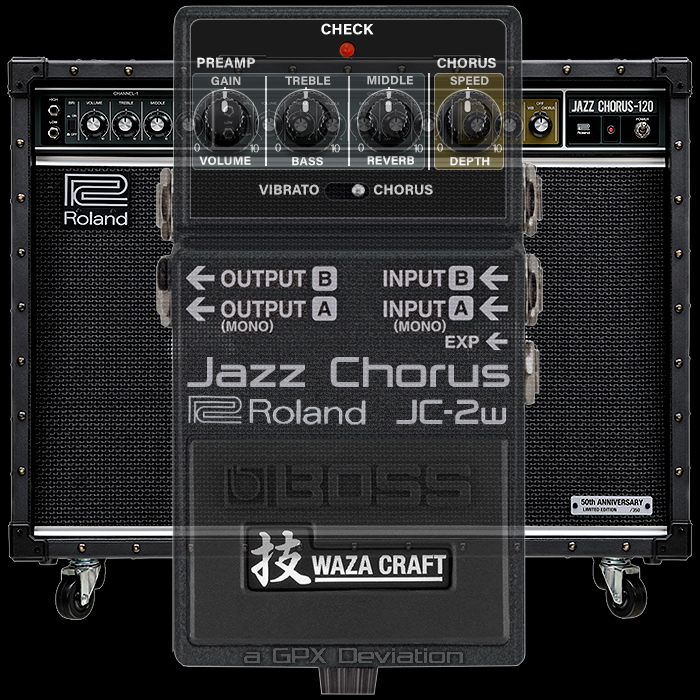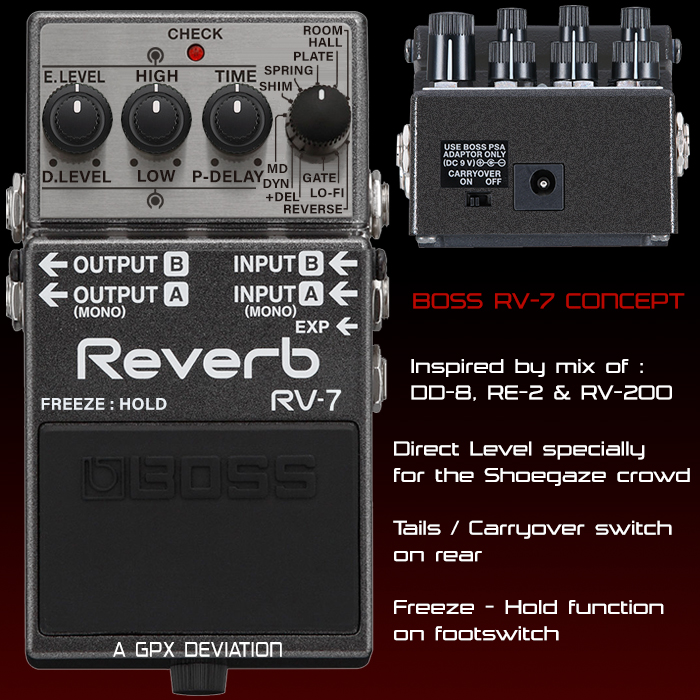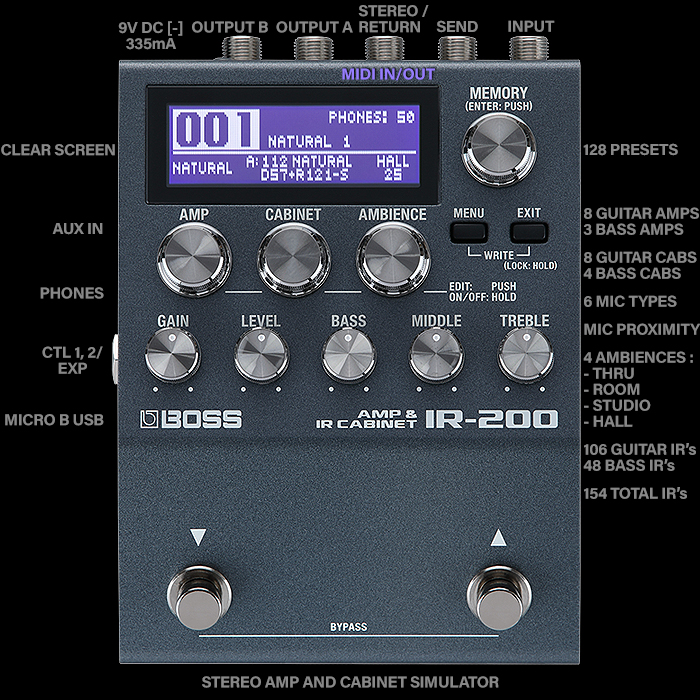Boss's new GX-10 Guitar Effects Processor shrinks down the GX-100 unit to more svelte proportions - while delivering 99% of the same experience
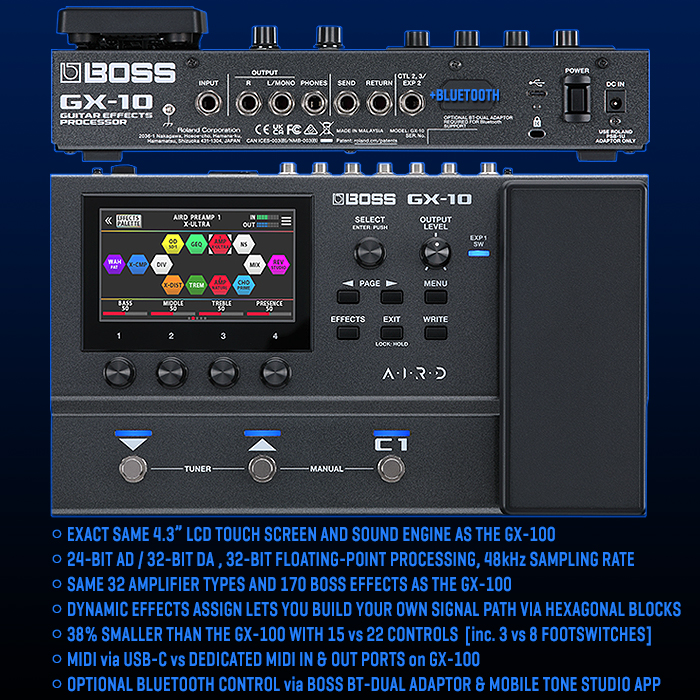
So for circa 30% less outlay, and a 38% saving in footprint - you get mostly the same device as the larger GX-100 unit. The obvious differences are the 5 fewer footswitches, and lack of CTL/EXP and In/Out Settings buttons. You also loose the 5-pin MIDI In & Out - where you need to use the USB port for that instead on the GX-10 Unit.
Other than those few elements we’re mostly talking about the same device - it has the exact same 4.3" LED Touch Screen, and same high fidelity sound engine as the GX-100. It also has the same screen interface with all the same 32 Amplifier Types and 170 Boss Effects onboard.
I’m a big advocate for Bluetooth - and I thoroughly recommend you add the Boss BT-Dual Adapter ($55 / €49 / £42). All you’re losing here is a little bit of on-the-fly control granularity, and connectivity, where for pretty much the same experience you’re making a saving of c$200 / €200 and £150.
For my own needs I would much prefer the smaller form factor of the GX-10. It’s not as potent as the even smaller GT-1000 Core - but then it covers much the same ground, and includes an expression pedal within the body of the device.
I’m not sure why Boss went with those coloured hexagons it looks slightly 1980’s low res - kinda Q*bert or Blockbusters game show styling - where other manufacturers are investing more into proper pictorial displays - like say Amplitube, Positive Grid, and Fender with its Tone Master / Tone Studio. Boss definitely needs to catch up with that movement or else its interfaces will look somewhat anachronistic. I’ve often commented that the pedal sector is at least 10 years behind consumer electronics in interface design - while several of these interfaces are still kind of rooted in the past. Seeing a simulacrum of a TS808 pedal with its 3 knobs - is much stronger and visually intuitive than a coloured block. I’ve levelled the same critique at the recent Fractal Audio VP4 Devices - which has a fantastic featured set, but a woefully anachronistic screen interface!
I feel the GX-10 is though well placed for probably and intermediate player’s second multi-fx pedal - replacing their beginner $200 import pedal - with something a little more rounded and robust!
Build quality on Boss devices is always top-notch - and all those devices are built to withstand many years of fairly spirited playback. I’m sure these new GX-10 will find many a happy home. The GX-100 has done really well for Boss, and I feel this will do even better!
Controls - Select [Enter Push], Output Level, < Page >, Menu, Effects, Exit [Lock : Hold], Write, Variable Params 1-4, Bank Down, Bank Up, Band Down - Up = Tuner, C1, Bank Up + C1 = Manual, EXP 1 SW Treadle.
Rear Ports - Ground contact, Mono Input, R Out, L/Mono Out, Phones Out (1/4"), Send / Return Loop, CTL 2, 3 / EXP 2 Port, Bluetooth BT-Dual Anchor Point, USB-C, Kensington Lock, Power Switch, Power : 9V DC [-] Current Draw 1200mA.
You can read up more on the GX-10 on the Boss.info website.
Overview, Features and Specifications

Powerful GX-100 tone tools in a compact guitar/bass processor with a color touch display, multi-function footswitches, and a built-in expression pedal.
Players everywhere love the GX-100 for its streamlined design, free-flowing interface, and high-quality tones. Armed with the core GX-100 engine, the compact GX-10 brings you the same inspiring experience in an even more portable footprint.
You get loads of AIRD amps and effects for covering every style, plus speedy sound building with the intuitive color touch display and panel knobs. Adding in multi-mode footswitches, an integrated expression pedal, and USB audio connectivity, the GX-10 seamlessly transitions from nightly stage performing to desktop recording, song creation, and daily practice sessions.
- Compact amp/effects processor for guitar and bass
- The same sound engine and color touch display as the GX-100 in a portable, travel-ready design
- Exceptional audio quality with 24-bit AD and 32-bit DA conversion, 32-bit floating-point processing, and 48
kHz sampling rate - Authentic tube amplifier tone and touch response with AIRD technology
- 32 amplifier types and 170 BOSS effects
- Ultra-flexible amp/effect routing up to 15 assignable blocks
- Wide selection of onboard speaker types and support for loading WAV speaker IRs
- Streamlined modern design with a rugged metal chassis
- Three footswitches with flexible control modes
- Onboard expression pedal with toe switch
- Connect up to two footswitches or an expression pedal for expanded control
- Send/return loop for external pedals
- Record and play tracks in music production software on a computer or mobile device* via a USB-C®
- Edit sounds from your computer with BOSS Tone Studio for macOS and Windows
- Download and share Livesets at BOSS Tone Exchange (compatible with GX-100 Livesets)
- Optional Bluetooth® Audio MIDI Dual Adaptor allows you to edit sounds and stream audio from an iOS or Android mobile device
- Dimensions : 300 (W) x 183 (D) x 74 (H) mm
- Weight : 2.2kg
- MAP / RRP : $399 / €399 / £354
Recommended Accessories
- Footswitch : FS-5U / FS-5L / FS-6 / FS-7
- Expression Pedal : FV-30, FV-500L, FV-500H, Roland EV-5
- Bluetooth Audio MIDI Dual Adaptor : BT-DUAL [$55 / €49 / £42]
- Wireless MIDI Expression Pedal: EV-1-WL
- Wireless Footswitch : FS-1-WL
- Instrument Cables : BIC-Series
Demos







